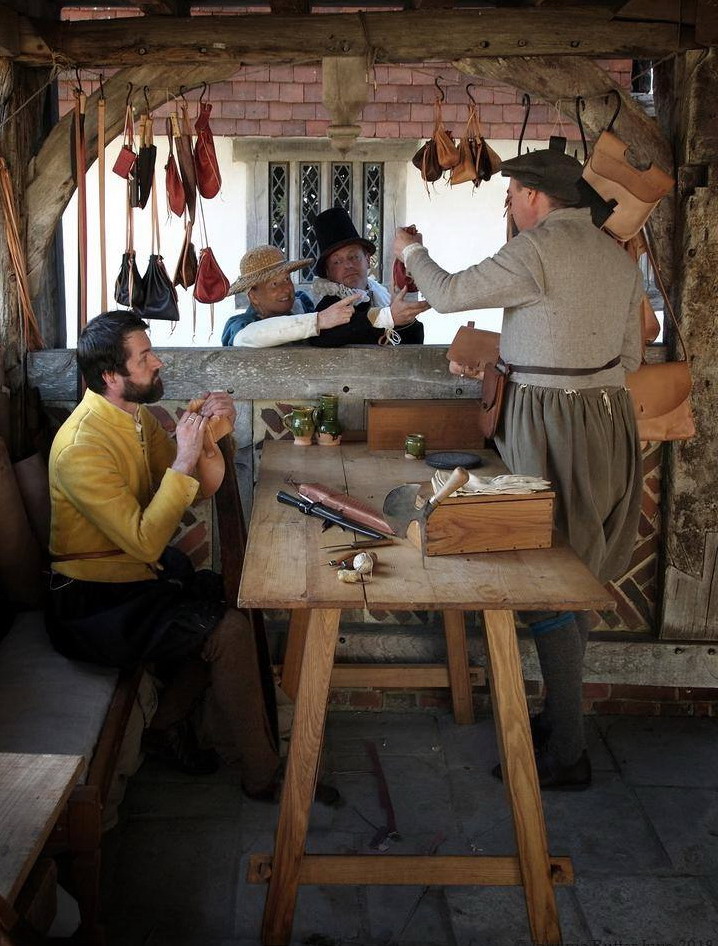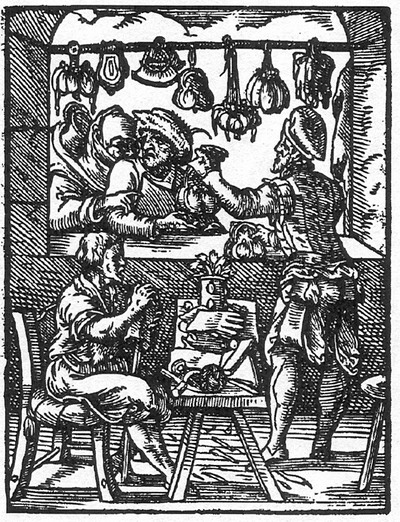ABOUT ME
I have been working with leather for over twenty five years and specialize in making historically accurate Medieval, Tudor and Stuart leatherwork for re-enactment, museums, theatre and the heritage industry.
All my work is made by hand using only the materials and techniques available to the craftsmen of the time. I only use leathers that were commonly available and dye and dress them myself using period recipes. Everything is hand sewn and all the designs are taken from surviving examples or from paintings and prints.
The Bag Maker from the Book Of Trades by Jost Amman 1568
By working in the way the original craftsmen did my work has a very authentic look and feel to it that cannot be achieved with the modern leathers and methods used by many other leather workers.
If you can't find what you are looking for please contact me. I am happy to undertake commissions and I can alter any of the designs on this site to suit your preferences.
ABOUT 16th CENTURY LEATHER DYEING
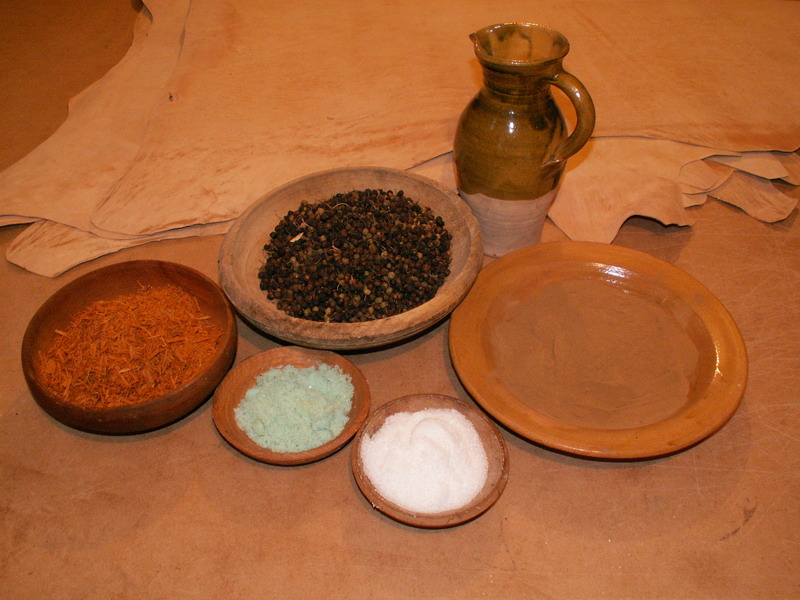 The range of colours available to the period craftsmen were much more limited than those available today and the dyes were all derived from plants. Modern leather dyes tend to be very opaque, producing very solid colours that can cover up many imperfections in the leather. Modern dyes are also very resistant to fading. Period vegetable based dyes are much softer in tone and are more translucent allowing the character of the leather to show through as well as any imperfections and scars. The colour range is much more limited and they change over time when exposed to sunlight.
The range of colours available to the period craftsmen were much more limited than those available today and the dyes were all derived from plants. Modern leather dyes tend to be very opaque, producing very solid colours that can cover up many imperfections in the leather. Modern dyes are also very resistant to fading. Period vegetable based dyes are much softer in tone and are more translucent allowing the character of the leather to show through as well as any imperfections and scars. The colour range is much more limited and they change over time when exposed to sunlight.
The range of colours available to the period craftsmen were much more limited than those available today and the dyes were all derived from plants. Modern leather dyes tend to be very opaque, producing very solid colours that can cover up many imperfections in the leather. Modern dyes are also very resistant to fading. Period vegetable based dyes are much softer in tone and are more translucent allowing the character of the leather to show through as well as any imperfections and scars. The colour range is much more limited and they change over time when exposed to sunlight.
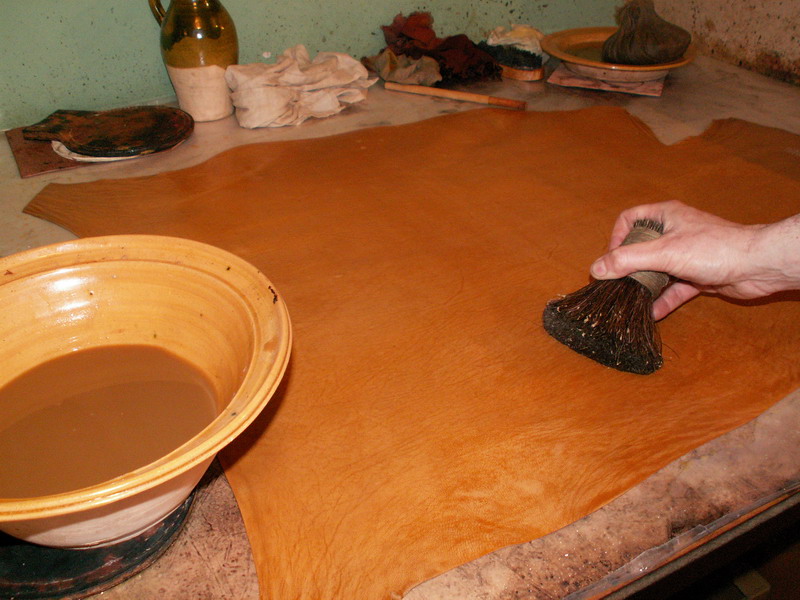 All the dyes I use are based on the recipes found in the 1548 Italian dyers manual "Plictho de Lare de Tentori ...." compiled by Gioanventura Rossetti. Firstly the dye stuffs are boiled in water to extract the dye and then mordants are added to help fix the dye to the leather. Once the dye has been prepared it is painted onto the skins using a large brush. The skins are then hung up to dry. If a deeper colour is needed then this process is repeated.
All the dyes I use are based on the recipes found in the 1548 Italian dyers manual "Plictho de Lare de Tentori ...." compiled by Gioanventura Rossetti. Firstly the dye stuffs are boiled in water to extract the dye and then mordants are added to help fix the dye to the leather. Once the dye has been prepared it is painted onto the skins using a large brush. The skins are then hung up to dry. If a deeper colour is needed then this process is repeated.
All the dyes I use are based on the recipes found in the 1548 Italian dyers manual "Plictho de Lare de Tentori ...." compiled by Gioanventura Rossetti. Firstly the dye stuffs are boiled in water to extract the dye and then mordants are added to help fix the dye to the leather. Once the dye has been prepared it is painted onto the skins using a large brush. The skins are then hung up to dry. If a deeper colour is needed then this process is repeated.
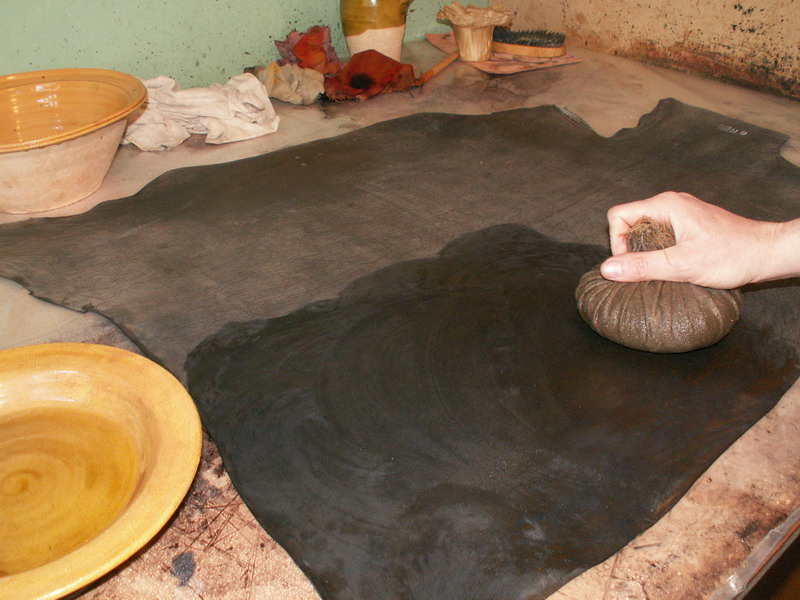 After dying the skins are usually very dry and stiff so they need to be dressed and softened before they can be used. First the skins are oiled with olive oil to improve the colour and then they are dressed with a mixture of bees wax, animal fat oil, lanoline and turpentine. This lubricates the fibres of the leather and makes the leather more supple and tear resistant.
After dying the skins are usually very dry and stiff so they need to be dressed and softened before they can be used. First the skins are oiled with olive oil to improve the colour and then they are dressed with a mixture of bees wax, animal fat oil, lanoline and turpentine. This lubricates the fibres of the leather and makes the leather more supple and tear resistant.
After dying the skins are usually very dry and stiff so they need to be dressed and softened before they can be used. First the skins are oiled with olive oil to improve the colour and then they are dressed with a mixture of bees wax, animal fat oil, lanoline and turpentine. This lubricates the fibres of the leather and makes the leather more supple and tear resistant.
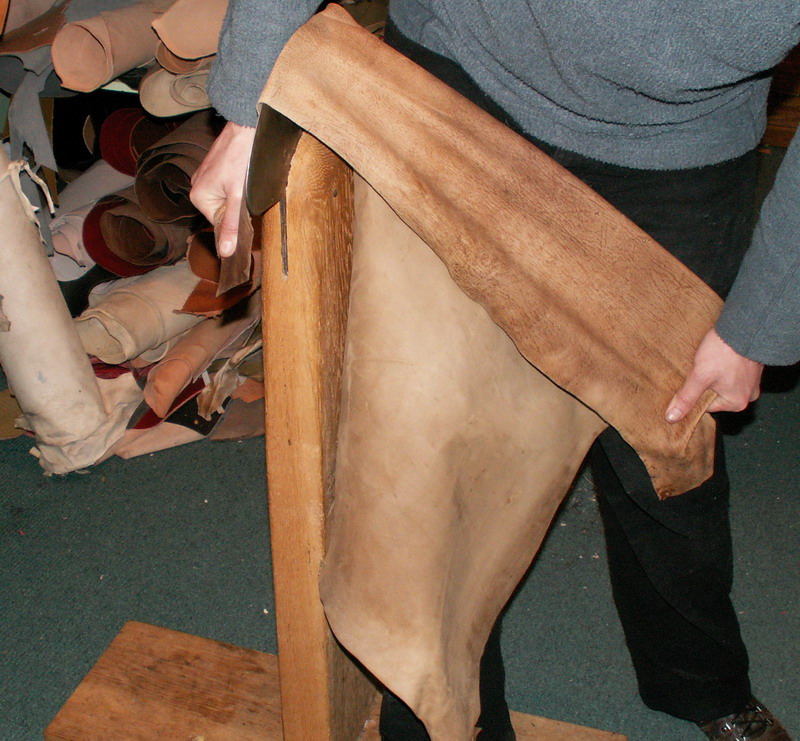 After dressing the skins are softened using a stake. This is done by pulling the leather a number of times over a blunt knife in all directions. This loosens the fibre bundles in the skin and allows them to move more freely against each other making the leather nice and soft. It also has the effect of pulling the dressing deeper into the fibres.
After dressing the skins are softened using a stake. This is done by pulling the leather a number of times over a blunt knife in all directions. This loosens the fibre bundles in the skin and allows them to move more freely against each other making the leather nice and soft. It also has the effect of pulling the dressing deeper into the fibres.
Once softened the skins are given another dressing on the grain side and then left to rest for a few weeks.
After dressing the skins are softened using a stake. This is done by pulling the leather a number of times over a blunt knife in all directions. This loosens the fibre bundles in the skin and allows them to move more freely against each other making the leather nice and soft. It also has the effect of pulling the dressing deeper into the fibres.
Once softened the skins are given another dressing on the grain side and then left to rest for a few weeks.

